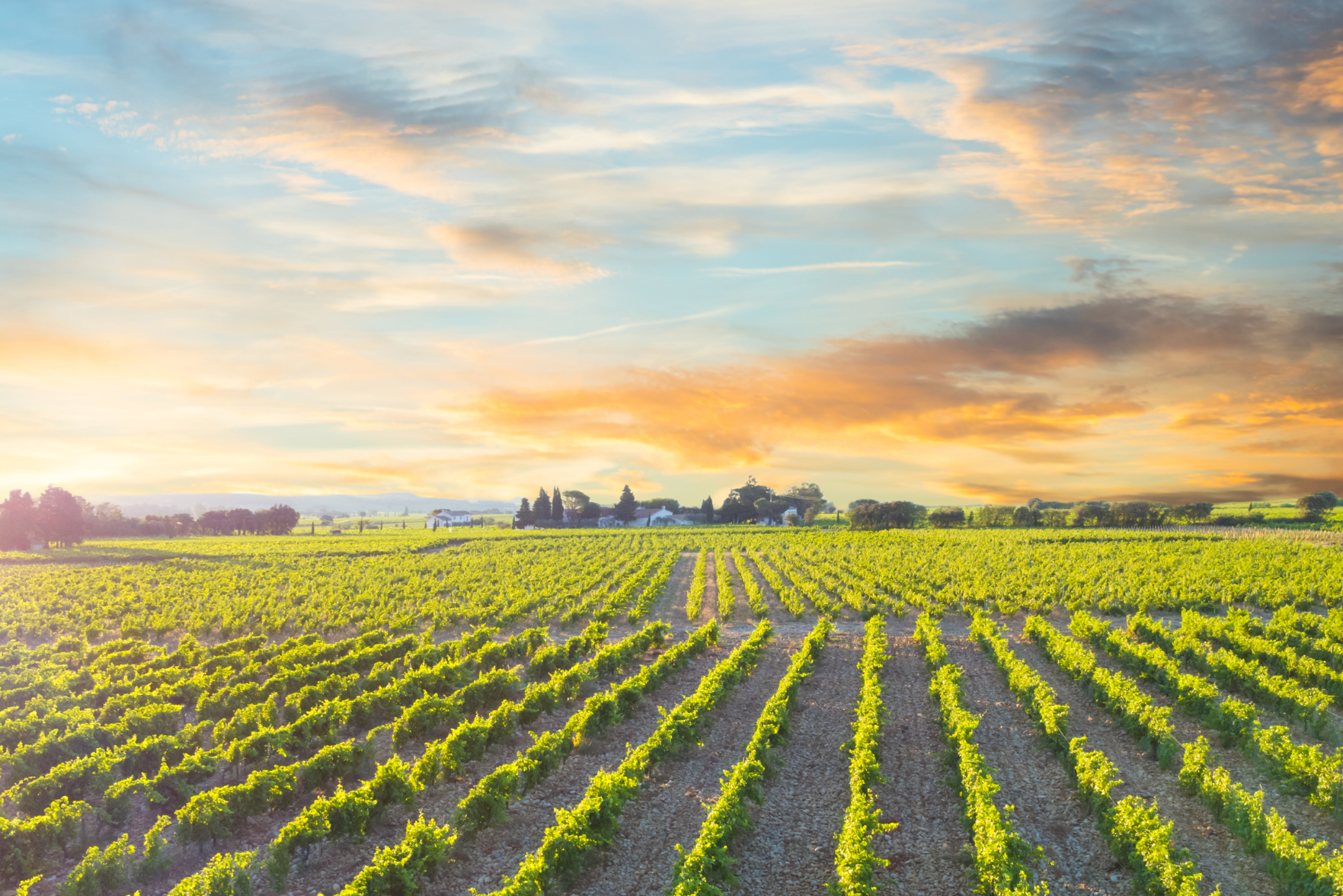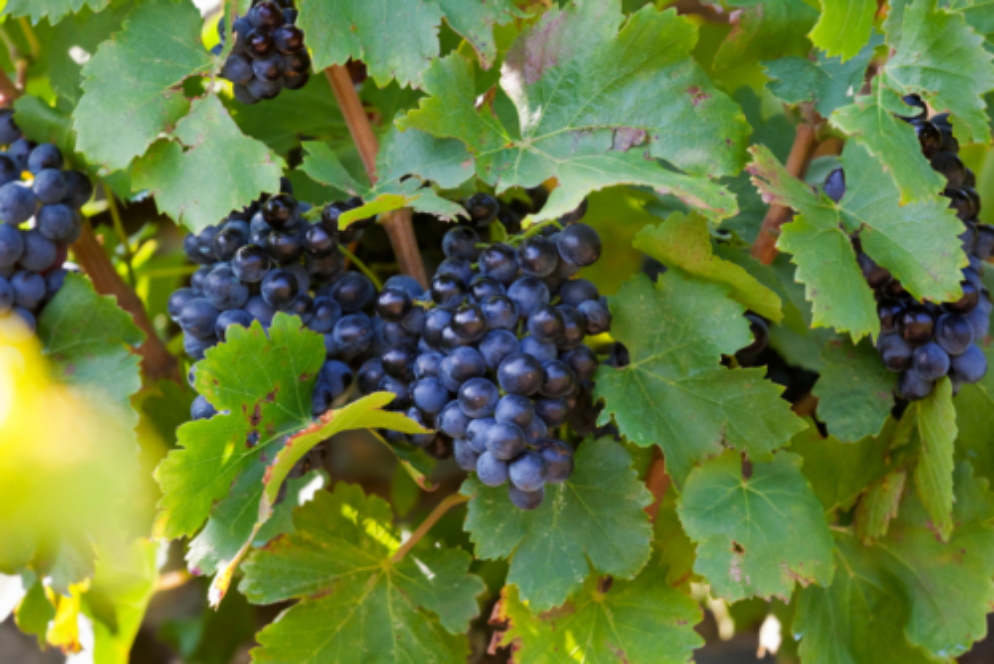A beginner's guide to French wines
Posted by Josh on 3rd Nov 2025 in the blog in the french food category
Did you know that France produces over 8 billion bottles of wine every year? That’s more than a hundred bottles for every citizen of France, but of course the country exports its wines to countries all over the world, and is considered by many to be the wine capital of the world.
Why is France so famous for its wines? Partly it's to do with France's climate, which is surprisingly diverse but generally suited to producing high-quality wines. The grapes needed to produce wines rely on warmth and sunlight, but also on a moderate amount of rainfall to grow properly.
Wines also play an important role in French culture, whether as pre-dinner apéritifs, beverages to accompany (and complement) a meal, or as special libations to celebrate birthdays and festivities.
Another reason is that the French wine industry is highly regulated. For a wine to carry an AOC (Appellation d'Origine Contrôlée), which is the prestigious designation that marks out the very best wines, a wine must not only have come from a certain region, but must also adhere to strict standards regarding the type of grape used, the techniques used to harvest the grapes and the way the wine is made. There are also other designations, such as VDQS (Vin Délimité de Qualité Supérieure) and Vin de Pays, that similarly guarantee a special degree of quality.
French wines are labelled by region, rather than the type of grape used in their production, as is normally the case in countries such as the UK and US. It's therefore helpful to know a little about the different regions that are used to classify French wines. Below you'll find some of the popular wine regions in France.
Bordeaux
One of France’s most famous red wine regions, Bordeaux is situated on France’s west coast, where it debouches onto the Bay of Biscay, and so the climate is typically wet and warm. The Gironde Estuary divides the region into the Left Bank and the Right Bank, and each of these areas are known for producing distinctive styles of wine. The Left Bank is home to a number of cabernets, for instance, while the soils of the Right Bank make it the ideal place for wines made from merlot. Wines from the Bordeaux region tend to be medium-bodied, with aromas of spice and redcurrants, and generally pair well with cheese and red meat.
Champagne
Ofted popped open for celebrations, the sparkling wines from the cool Champagne region are normally made from pinot noir, pinot meunier or chardonnay. The wines are often made from a variety of different vintages, meaning the grapes used in the production of the champagne are harvested in different years, but some wines - known as millésimé - are made from grapes from a single high quality vintage. Champagnes are verstatile, and pair well with a range of foods, especially seafood.
Burgundy
Burgundy is known for its red wines, in particular pinot noirs, but is also home to some of the world's best chardonnay. Chablis is produced in the northernmost part of the region, where the cool climate leads to a dryer, more acidic wine, while the Côte de Nuits, an area of limestone and clay, is known for the very best pinot noirs. Unlike Bordeaux, the vineyards in Burgundy tend to be very small. Cultivation is meticulous and difficult, and conducted in the traditional way laid down by monks who used to produce the wines around this region. Wines from Burgundy tend to exhibit subtle yet earthy flavours.
Loire Valley
If you're drinking a sauvignon blanc in France, it's likely to have come from the Loire Valley, an area which follows the Loire river for nearly 200 miles inland from the Atlantic. This mild region in the northwest of France is however home to quite a variety of different wines, from crisp whites to light reds and fruity rosés. They tend to pair well with salads, cheeses and seafood.
Rhône Valley
Like Bordeaux, the Rhône Valley is split into two major sub zones by the Rhône River. Wines from the hilly northern part tend to be made from a single grape, while wines from the flatter and warmer south are often multi-varietal blends. The northern Rhône Valley tend to be a higher quality, and are thus more expensive, although most of the wines which boast the Côtes-du-Rhône Villages appellation hail from the south. A particularly good red wine is the Châteauneuf-du-Pape, which is made from four different types of grape.
Provence
One of the oldest wine regions in France, there have been vineyards in Provence for nearly 3,000 years. Most wine produced in Provence is rosé, including the world-famous onion skin, named for its subtle pigmentation. These wines, with their aromas of peach, strawberry and lemon peel, are particularly popular in the summer months.
Our 2024 immersion trip to Aix-en-Provence included a wine tasting session, where guests got the opportunity to sample some of the excellent wines from this region.
Alsace
This region of France has swapped hands between France and Germany a number of times, and the Germanic influence on the wines produced here is what makes them so distinctive and often a bit sweeter than other French wines. Unlike the rest of France, and in common with Germany, these wines are not labelled by region but rather by the type of grape.
Alsace enjoys its fair share of rain and sunshine, making it ideal for the production of white wines, such as rieslings, gewürztraminers, pinot blancs and muscats.
Languedoc-Roussillon
Situated on France's gorgeous south coast, Languedoc-Roussillon's warm climate makes it the perfect place for viniculture. The region is home to a wide variety of superb wines, from whites and reds to fortified and sparkling wines. With its crisp flavour profiles and position on the French Riviera, white wines from Languedoc-Roussillon often pair well with Mediterranean seafood dishes, while reds are best enjoyed with hearty stews.
Check out some of our other blog posts!
What is the population of France?
Posted on by Josh in the french culture categoryJust how many people live in l'Hexagone and its overseas departments?
Read moreFrench speaking practice tips
Posted on by Josh in the learning french categoryAlexa and Charlotte give their advice on how to improve your pronunciation, conversational skills and overall confidence when speaking French
Read moreHave fun learning French Today
People from all over the world enjoy learning French with Alexa Polidoro’s popular French audio and video lessons.





